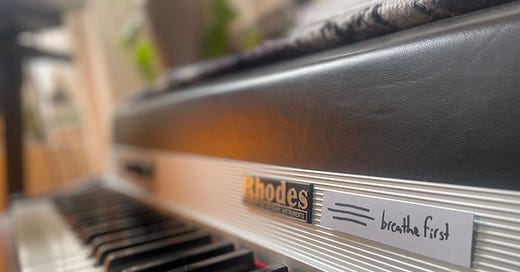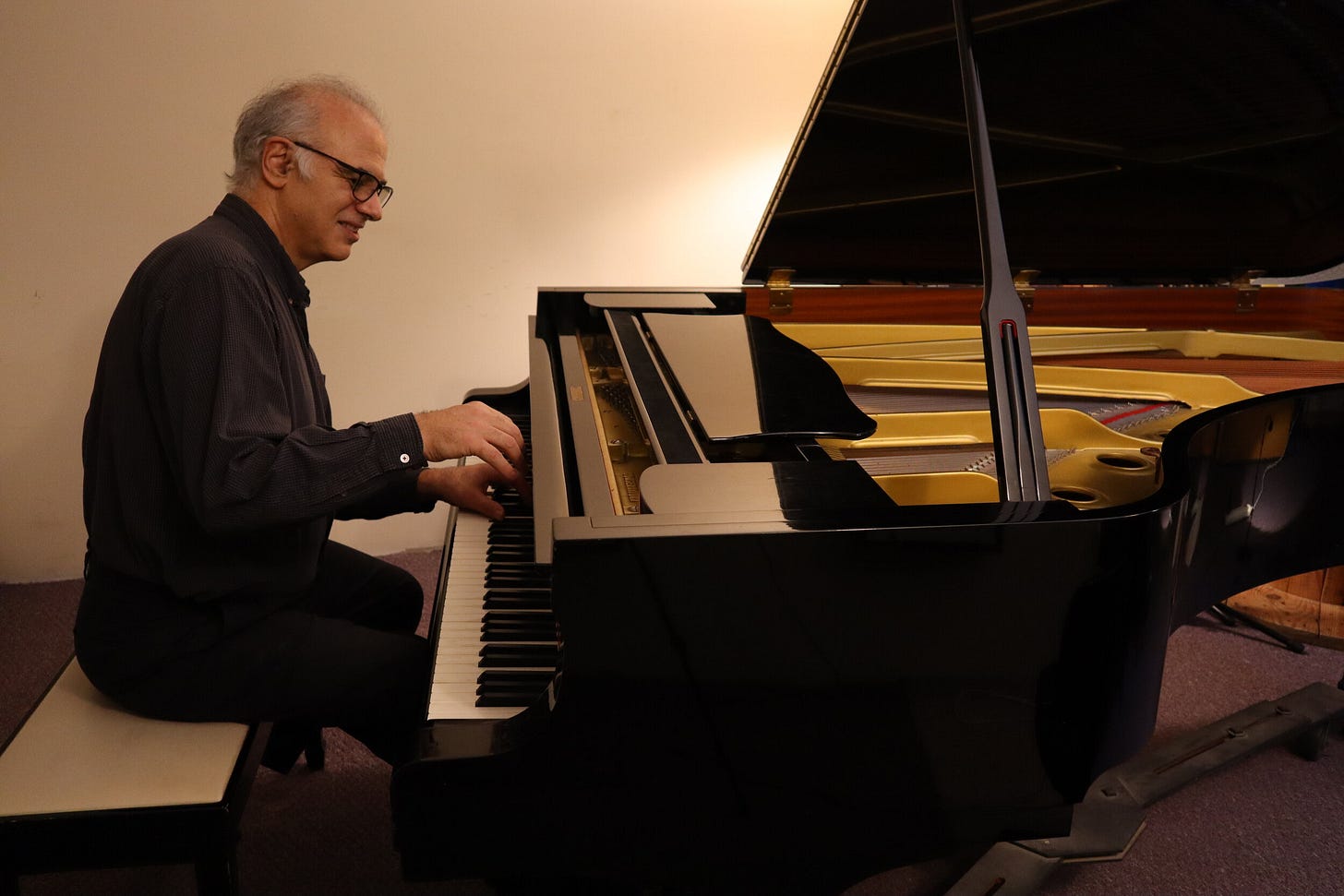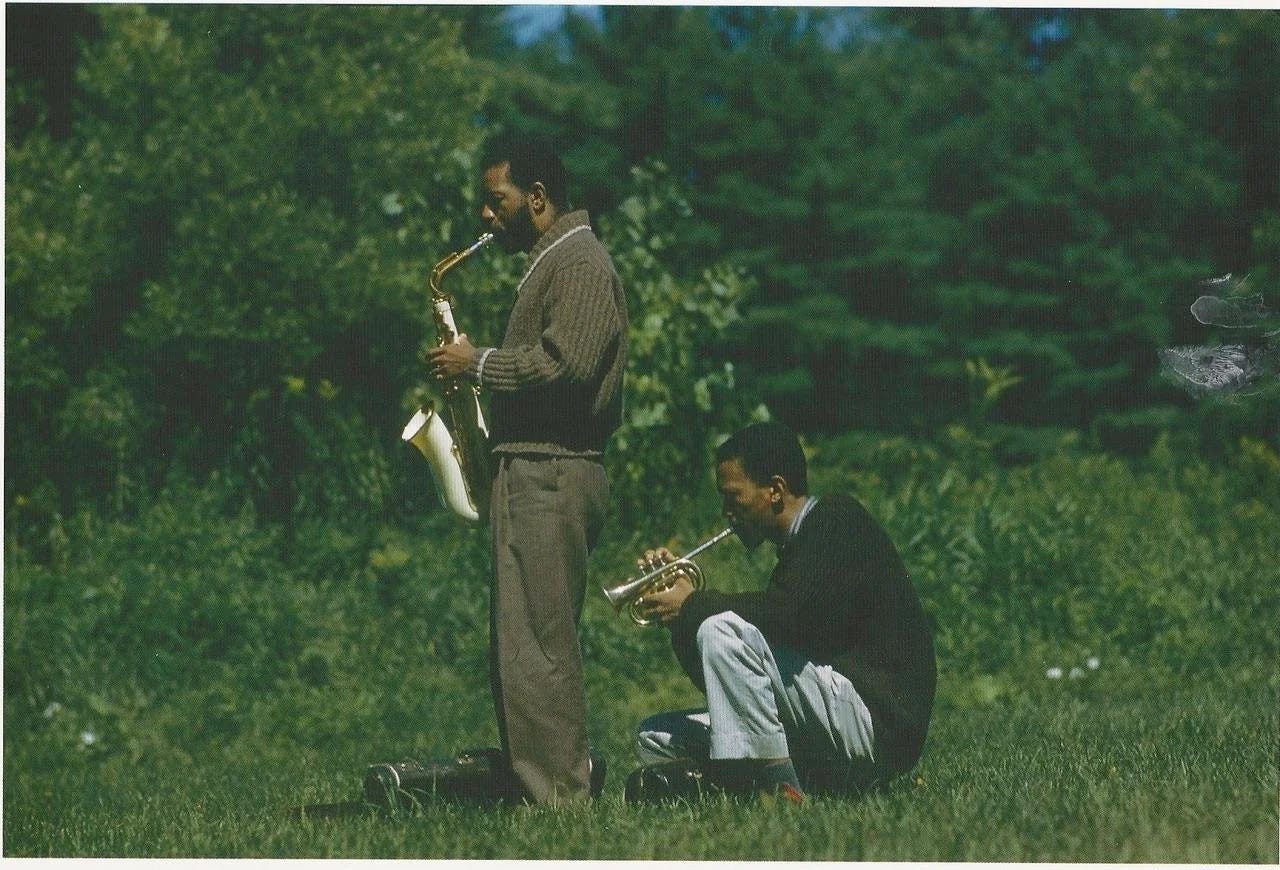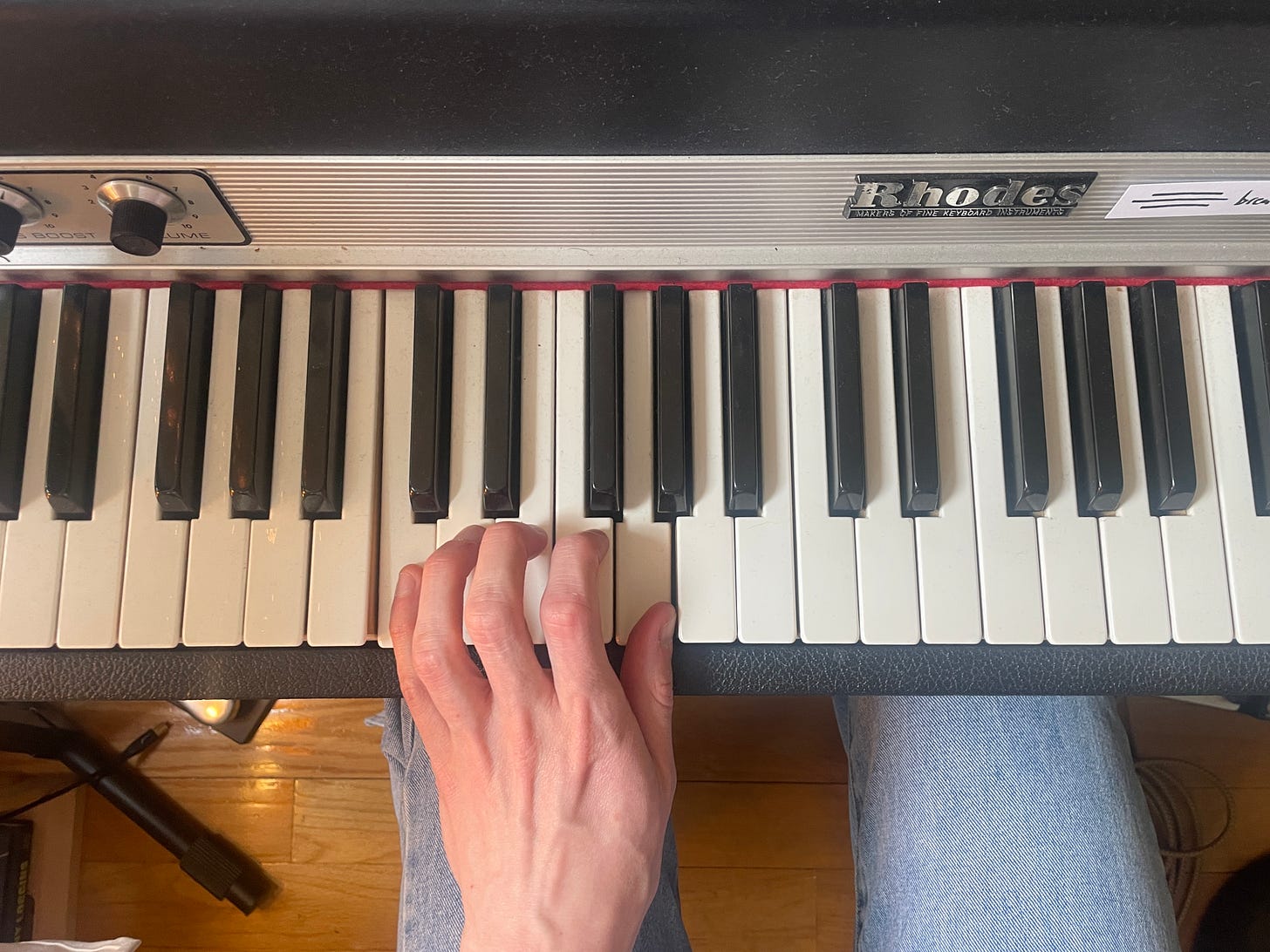The Music Mind
While I was attending SUNY New Paltz in 2016, the Jazz Studies program offered a one time course called Jazz Theory III. The professor was a remarkable musician, composer, and educator named Vinnie Martucci. This same professor taught the prior two courses, Jazz Theory I and II, which were a near comprehensive study of standard repertoire jazz covering everything from Louis Armstrong to Tin Pan Alley to Keith Jarrett and more.
In this third installment, Vinnie introduced us to a method referred to as basic music practice. I spoke with Vinnie on the phone this week to catch up and refresh myself on the background of this practice—
In 1972, a German musician named Karl Berger founded the Creative Music Studio in Woodstock, NY. The purpose of this study center was to advance musical thought by bringing together both students and masters of improvisation and composition in jazz and folk music traditions.
Karl Berger is credited as developing the method of basic music practice, but in reading Berger’s book (an excellent read you can find direct from the source for a modest $5 Patreon subscription) you’ll find he is quick to credit his own legendary mentors—Ornette Coleman and Don Cherry.
Essentially, this practice approaches music from the atomic level:
The practice itself can be split into two categories—tonal and rhythm. In tonal practice, the musician sings tones over a drone. In rhythmic practice, the musician says and plays foundational rhythm patterns.
I haven’t personally attended any CMS workshops, but I’ve been engaging in basic music practice on and off for the past 10 years. My background on the method comes primarily from Vinnie Martucci along with two other great teachers I was fortunate to study with—Charles Blenzig and Ingrid Jensen. I don’t believe Blenzig and Jensen were informed by the same school of thought, but they arrived at very similar and complimentary conclusions that guided me in executing my own basic music practice.
As a student of this method, I can tell you that it works. My previous two pieces covered the subjects of audiation and practice, and I’d argue that basic music practice is the distillation of those two ideas. After engaging in this practice for some time, you’ll begin to recognize intervals, rhythms, and chord qualities in recordings and performances. You’ll also be able to sing melodies and ideas that you hear in your mind’s ear. I would consider this practice to be the source of most of my musical “aha” moments over the last several years.
Having practiced this method for years, I’ve refined my own approach to consist of a series of tonal and rhythmic exercises. This began as a graduate school project in 2021, and I’ve since utilized it in my own practice and with my private students.
This piece will focus specifically on tonal basic music practice, and you can expect a follow up piece focusing on rhythm basic music practice.
Because this information was passed down to me by gracious teachers and mentors, I’ll be including the exercises I’ve developed for free download at the end of this piece. If you have the means to support my work, consider becoming a paid subscriber so I can continue to publish resources of this nature.
Preparing for your practice
Let’s begin with a couple steps of preparation—
First, this exercise involves singing over a drone. There are some really great drones available on Youtube as well as on music streaming platforms—cello drones and organ drones in particular are great for this. C and D work well with lower voices, and G and A work well with higher voices.
You can also use your instrument to make a drone—keyboard, guitar, and bass in particular work well for this. Just be sure the instrument is in tune and not utilizing any pitch modulation effects.
To make your drone, you’ll need a perfect 5th—consisting of a tonic and it’s 5th. Tonic simply means tonal center, and a 5th would be the 5th note in the tonic’s scale. If C is your tonic, play C and G. If G is your tonic, play G and D.
Second, you’ll need a way of finding each of the tones in this exercise before singing them. Again, a keyboard or guitar will work well for this. Another good option is an online keyboard—this one even has the notes labelled if you’re still early in your journey.
Lastly, this exercise is written in standard notation for ease of communication. Here is a handy chart (sourced from Music Theory 101) in case you need a bit of help finding each of the tones in the examples listed below:
Executing your practice
The following materials are meant to be utilized slowly. I’d encourage practicing 1 sequence or 1-3 cells per session for no more than 20 minutes. Begin with the first sequence, and do not move on to the next until you can sing each pitch without using an instrument to guide you. Remind yourself that this method will bear fruit over time and not in any single session.
Now, let’s begin with the first sequence—the natural major scale:
Sit comfortably in a chair with your instrument.
Begin your drone.
Find the first tone on your instrument (C in this example)
On a neutral syllable (hum, ooh, aah, loo, la, etc.), sing and hold the tone for several seconds—not too short that you can't settle in, and not so long that you feel overly physically exerted.
Listen for how the tone blends with the drone. Avoid thinking about consonance and dissonance, but aim for stability—meaning there are no wobbly sounds happening as the tone interacts with the drone.
Repeat each tone at least three times, fully engaging yourself in this slow and meditative practice.
Move on to the next tone, and repeat steps 3-6.
I aim to flesh out this exercise more in the forthcoming video essay version of this piece. Until then, here is a recorded example of the above exercise:
First, please be kind :) I am sharing my raw singing to show you how to carry out this exercise. I didn’t warm up before or tune my voice after because I wanted to give an authentic version of how this exercise works.
Second, I didn’t use an instrument to guide any of these tones—I know these tones because I’ve done this exercise for years!
Third and last, here are some observations listening back to my own singing:
I was hearing the 4th out of tune during the first two iterations, but the third settled in.
I initially heard the 6th a bit flat, but settled in during the following two iterations.
I scooped into the 7th and high tonic on most iterations, but I can chalk that up to low breath support.
Tonal Basic Music Practice
The above example is only the first exercise of the full 6 page document. The proceeding examples include natural minor, triads, 7th chords, chromatic melodic cells, and the full chromatic sequence. As I mentioned earlier, this is something that I have been working at for the last 10 years. It takes time to digest this material, but it works if you are able to stick with it.
That being said, here is the full exercise available for free download:
If you have any questions, leave a comment below and I will do my best to guide you in your own practice!
Acknowledgements and Gratitudes
This resource would not have been possible without many great teachers. I would like to extend special thanks to Vinnie Martucci, Charles Blenzig, and Ingrid Jensen for passing these ideas along to the next generation as they were once passed along to them.
Additional thanks to my good friend, Wyatt Rydlewski, for helping me edit this exercise as well as my partner, E, for helping me edit this piece and creating all my designs (today is our 1 year anniversary!) ❤️
Good luck, and happy practicing!











Hi Jerk! Firstly, I've been loving your newsletters and greatly appreciate the effort you put into creating and communicating these resources! For ear training, I use apps like Functional Ear Trainer (FET) and Earpeggio, and FET has a "random major" function where it'll drop you into a new key using I-IV-V-I for context, before providing a new tone to identify. I found my ear training really bumped up a level by suddenly needing to reorient around a new tonal center because I'm practicing two things at once: identifying the new 1, then the random tone (e.g. #4) within seconds.
All that being said, I'm curious if you've utilized this process of "reorientation" to strengthen your own ear, and how it might be integrated into this tonal basic practice methodology? For example, spending a week in C major, then the next week switching to a new key (e.g. G)? And then perhaps switching between C and G every other measure, while maintaining the 1-5-4-3-2-6-7-1 pattern? The goal being strength and flexibility of my ear within all major keys. The approach you've laid out is quite different than what I've done, and so far it's been really fun, so maybe this "reorientation" piece isn't necessary at all when using this approach. Curious what you think! Thanks. :)
Great resources for student musicians! Mention should also be made of the difference between just intonation and equal temperament, since that will reflect in the intonation difference between voice and instrument (voice naturally gravitates to the more natural intonation.).
Great you got to study with Ingrid, she's wonderful. I've played with her many times over the years.